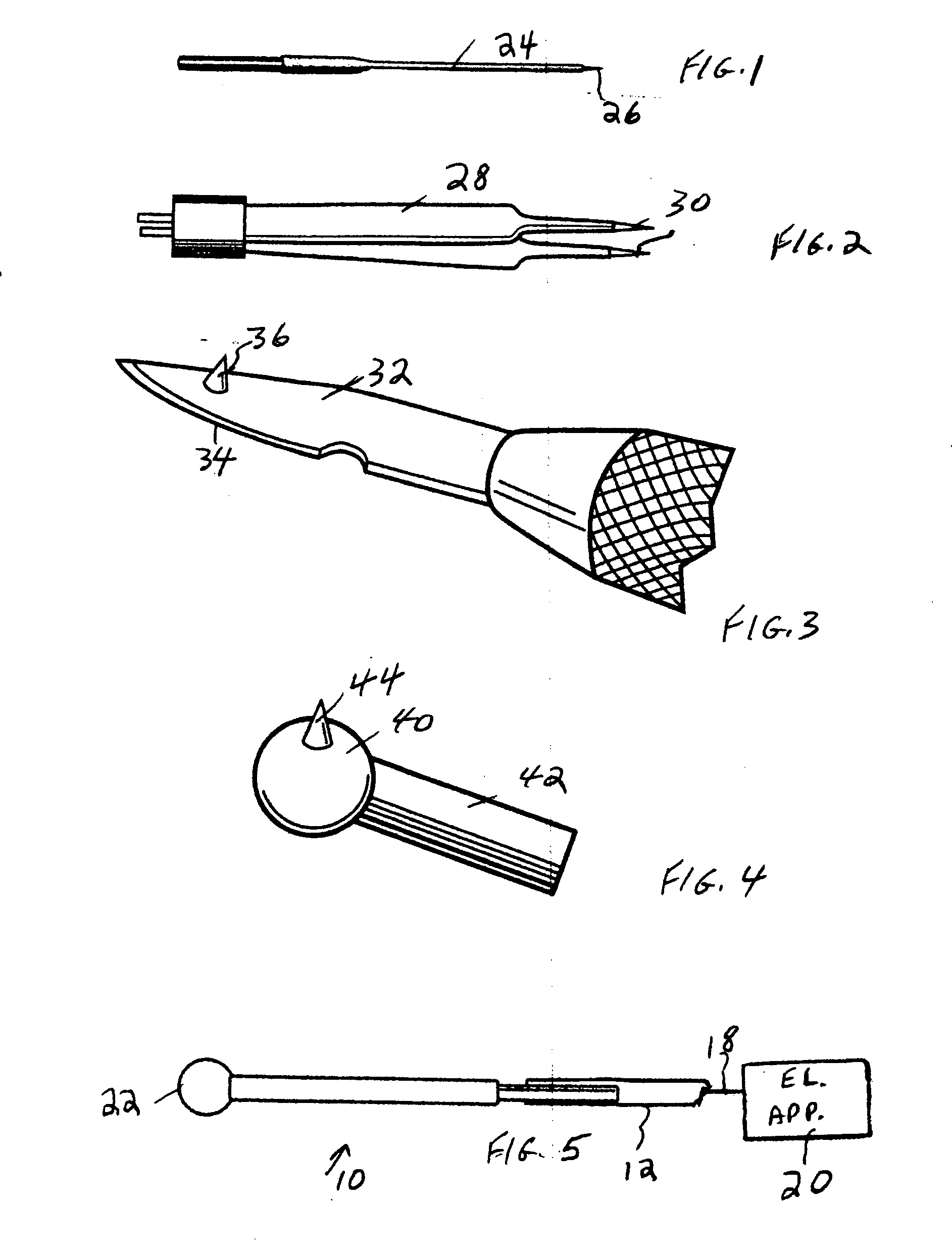Electrosurgical electrode with silver
a technology of electrodes and silver, applied in the field of electrosurgical electrodes with silver, can solve the problems of unusable tissue damage, steel scalpels used, etc., and achieve the effects of reducing generated heat, tightening bonding, and reducing tissue damag
- Summary
- Abstract
- Description
- Claims
- Application Information
AI Technical Summary
Benefits of technology
Problems solved by technology
Method used
Image
Examples
Embodiment Construction
[0035]FIG. 5 is a plan view of a unipolar electrosurgical electrode 10 according to the invention attached to the nosepiece 12 of the hollow handpiece described in the '754 patent. The latter comprises at its end a cable 18 connected at its opposite end to a connector (not shown) for plugging into a standard electrosurgical apparatus 20 supplying electrosurgical currents to the electrode 10 having a working end 22 in the form of a loop. In this instance, the loop would be constituted of the silver-alloy clad molybdenum of the invention.
[0036] In the variation illustrated in FIG. 1, the electrode is a needle electrode 24, preferably used for the cutting of biopsy specimens. In this instance, the pointed needle end 26 would be constituted of the silver-alloy clad molybdenum of the invention, and would be operated as a unipolar electrode. FIGS. 8 and 9 are, respectively, schematics of a longitudinal and horizontal cross-section of the needle electrode of FIG. 1. The core is designated...
PUM
| Property | Measurement | Unit |
|---|---|---|
| Length | aaaaa | aaaaa |
| Fraction | aaaaa | aaaaa |
| Fraction | aaaaa | aaaaa |
Abstract
Description
Claims
Application Information
 Login to View More
Login to View More - R&D
- Intellectual Property
- Life Sciences
- Materials
- Tech Scout
- Unparalleled Data Quality
- Higher Quality Content
- 60% Fewer Hallucinations
Browse by: Latest US Patents, China's latest patents, Technical Efficacy Thesaurus, Application Domain, Technology Topic, Popular Technical Reports.
© 2025 PatSnap. All rights reserved.Legal|Privacy policy|Modern Slavery Act Transparency Statement|Sitemap|About US| Contact US: help@patsnap.com



